How many tries does it take to get your painting to where you want it to be? For me the number was 12.
When it comes to getting better at something, I am a firm believer in practice. Having just returned to painting I wanted a good looking army out of the door- which meant I had to be decent when I started. I decided that the best way to do that was to put together spare models and spend time painting them one at a time. As I would go along, I’d evolve my technique while learning painting recipes and new color schemes. With no real deadline, I could do this until I got it right.
It took me half a year, but it worked really well. I thought I’d share.
Test Model #1
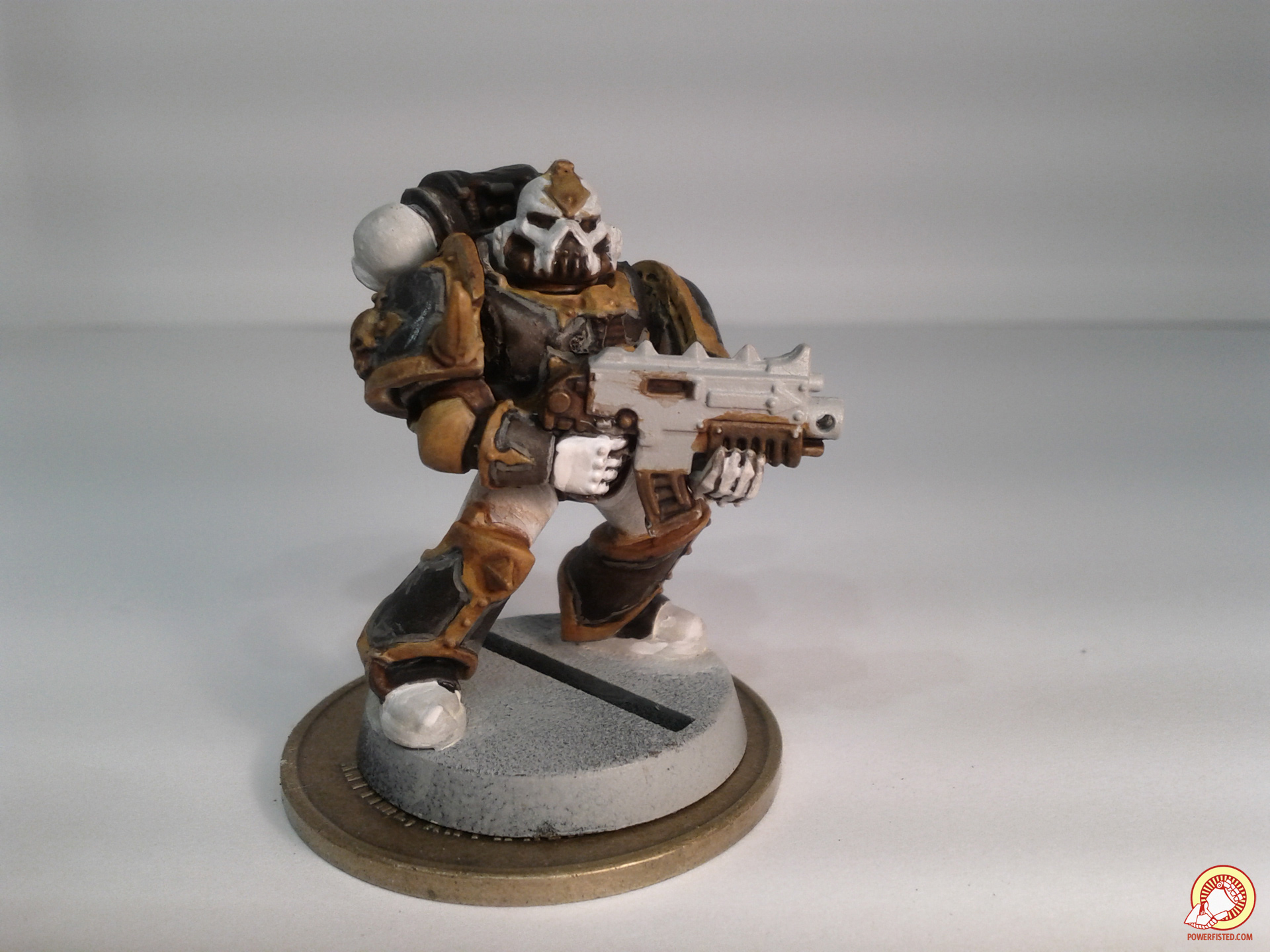
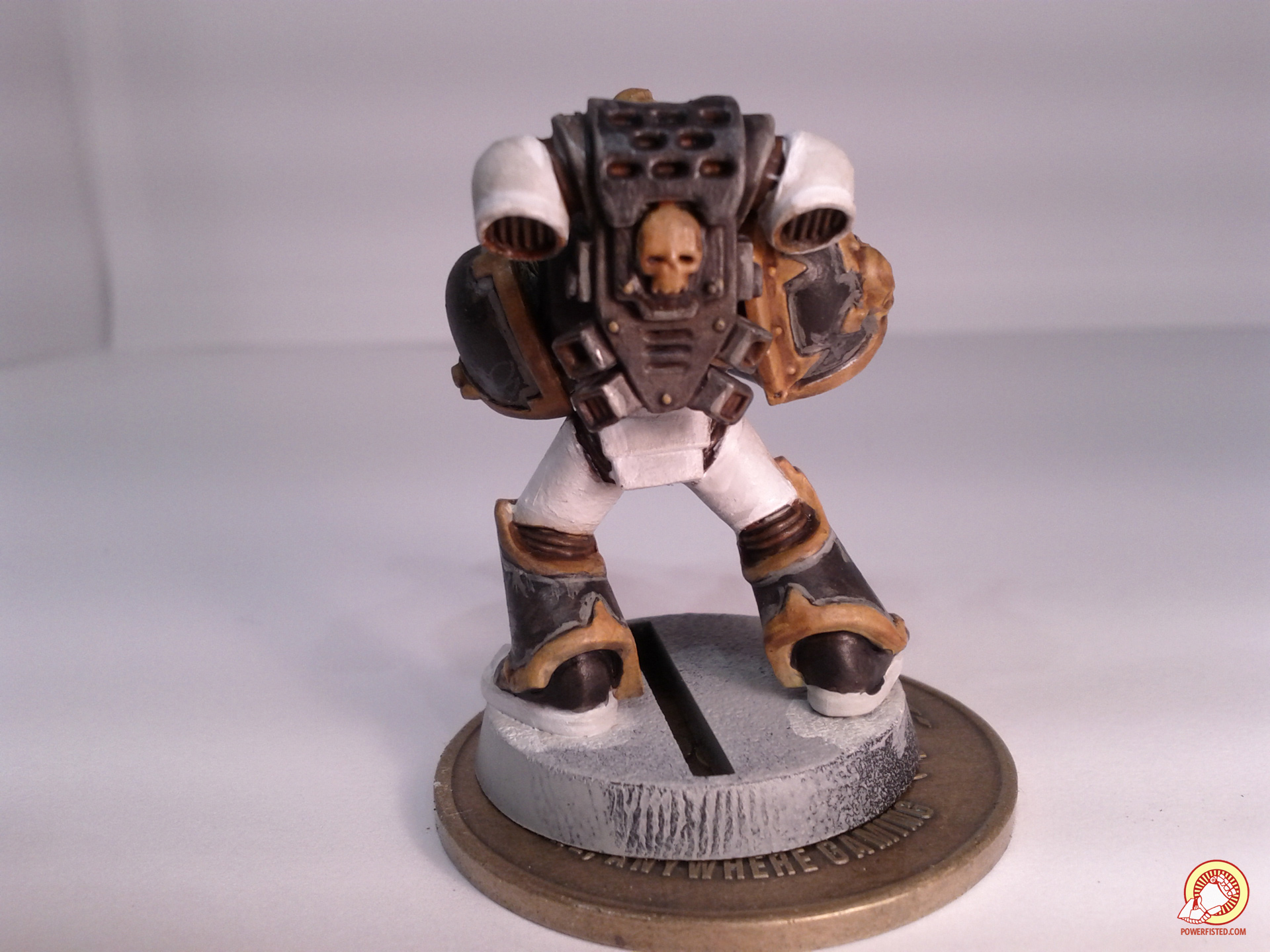
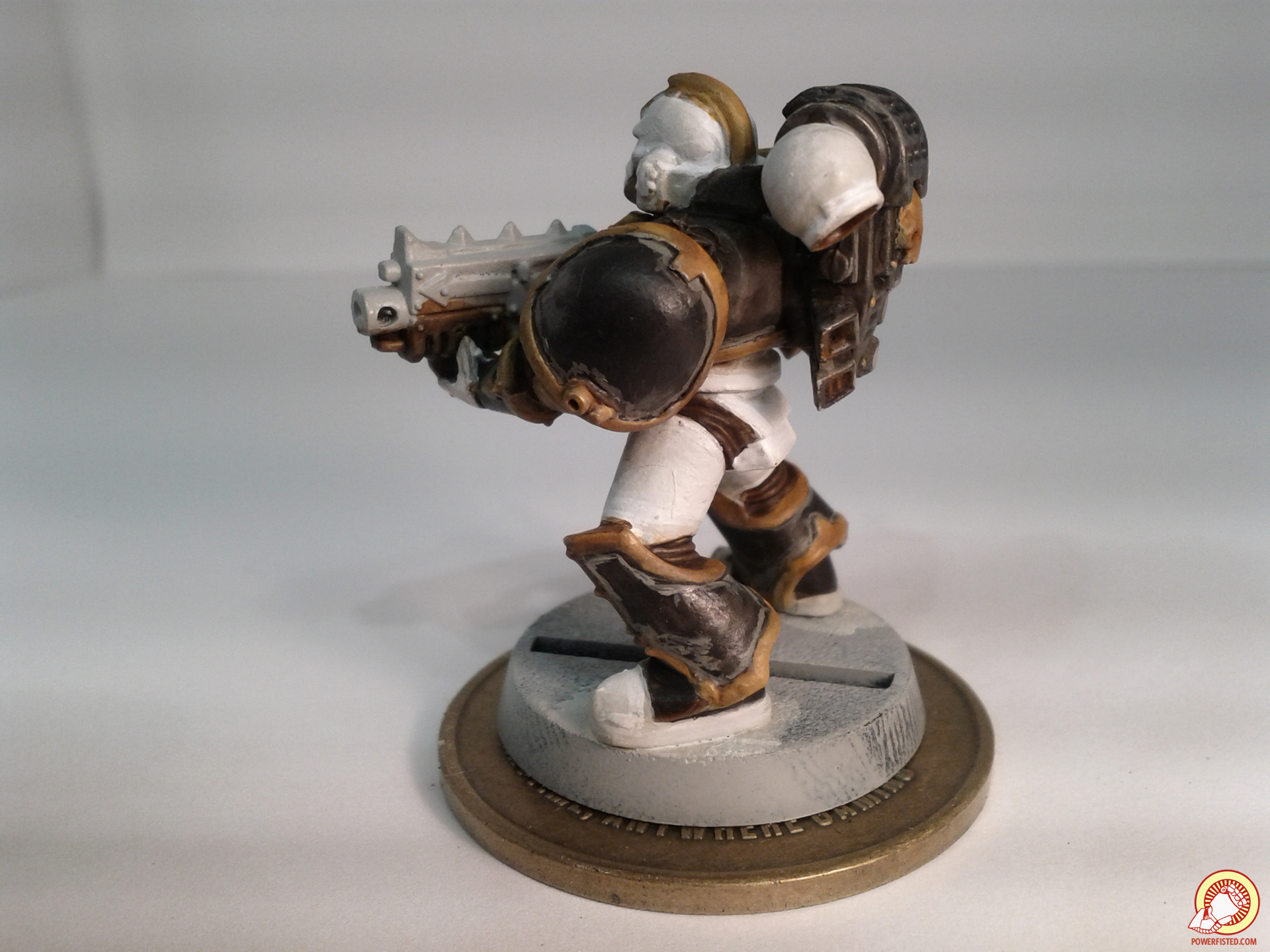
I knew my first mini would be awful, so I focused mostly on the basics- basecoats, thin layers (they aren’t, lol), and basecoats. You’ll notice I tried to do contrasting highlights for my black armor… that resulted in a lot of frustration. I didn’t even know what color I wanted to paint my bolter! All in all, I didn’t learn much painting this guy- I became familiar with what was possible. I was being held back by my skill, which I now understood, so I decided to keep trying until I was better.
Lessons learned: Washes are liquid skill. White is bitch to layer. Orange is fun to paint. I hate line highlighting. My camera phone sucks. I need better brushes (ordered them). I need a smaller brush for line highlights (I ordered one). I need to learn how to base things (bought basing supplies). Gesso is an OK primer. Paint dries too fast.
—-
Test Model #2

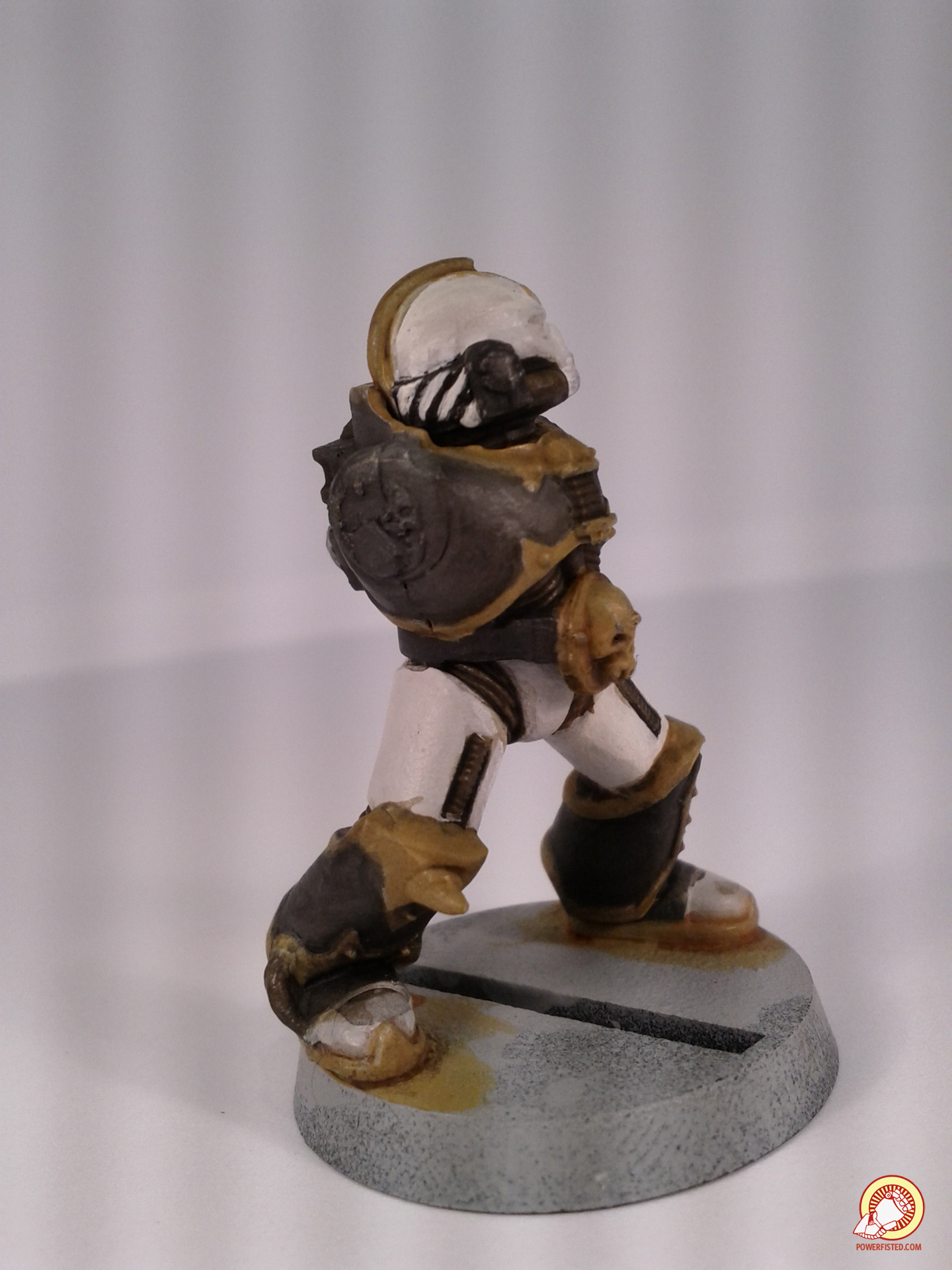
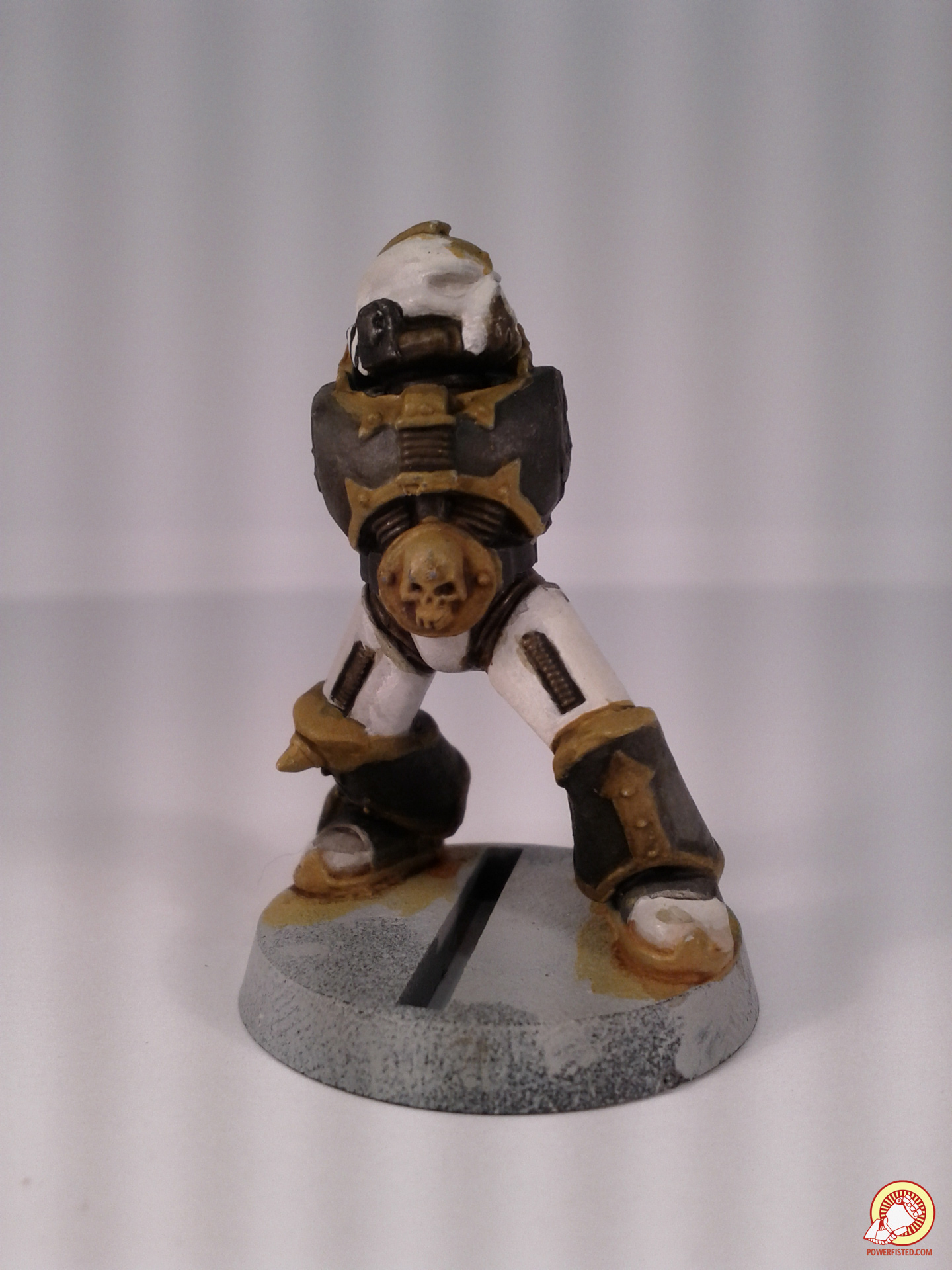
One of the first things I identified was that I was sloppy and my colors looked flat. I spent twice the time on this model as my first one, focusing hard at learning how to do ‘two brush’ blending. It turned out ok, but it was easier than I thought so I wanted to keep going.
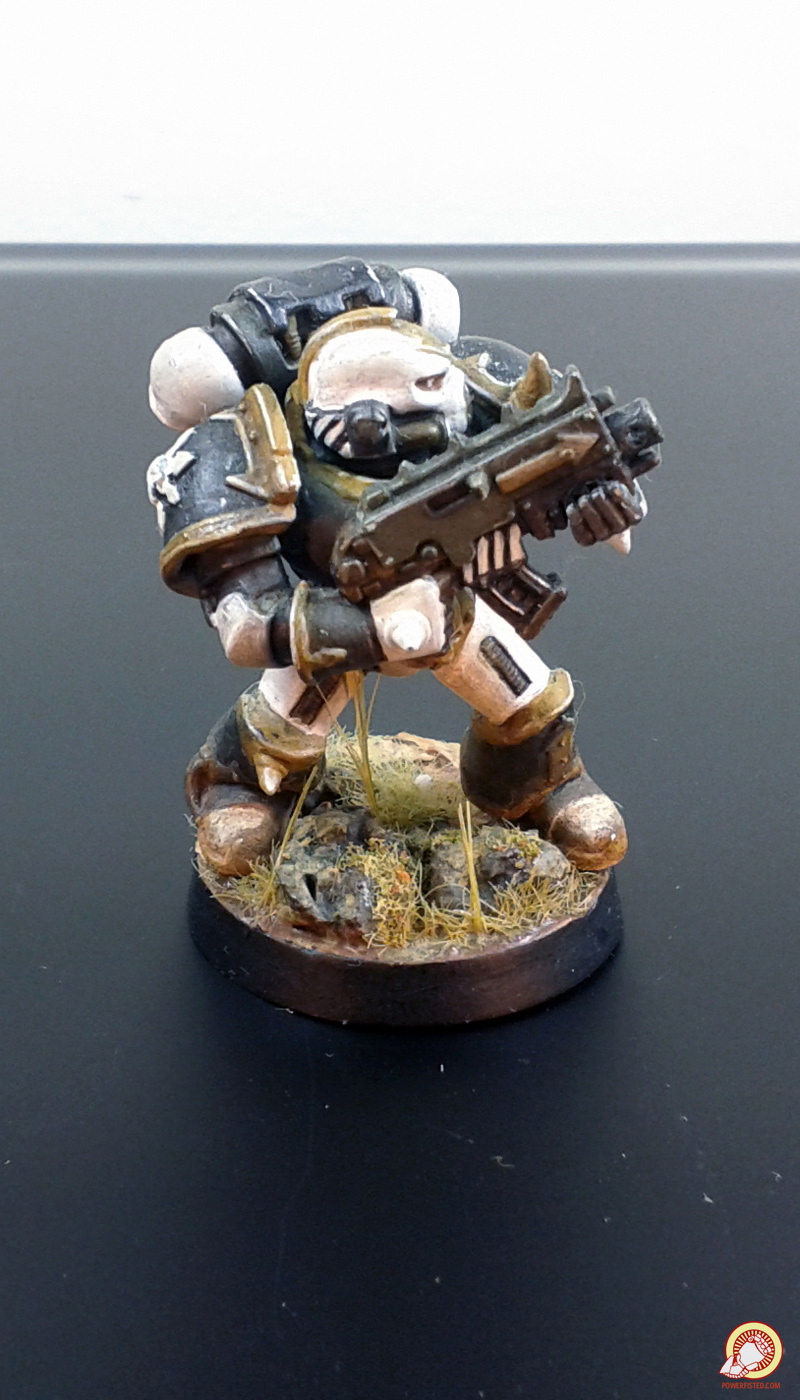
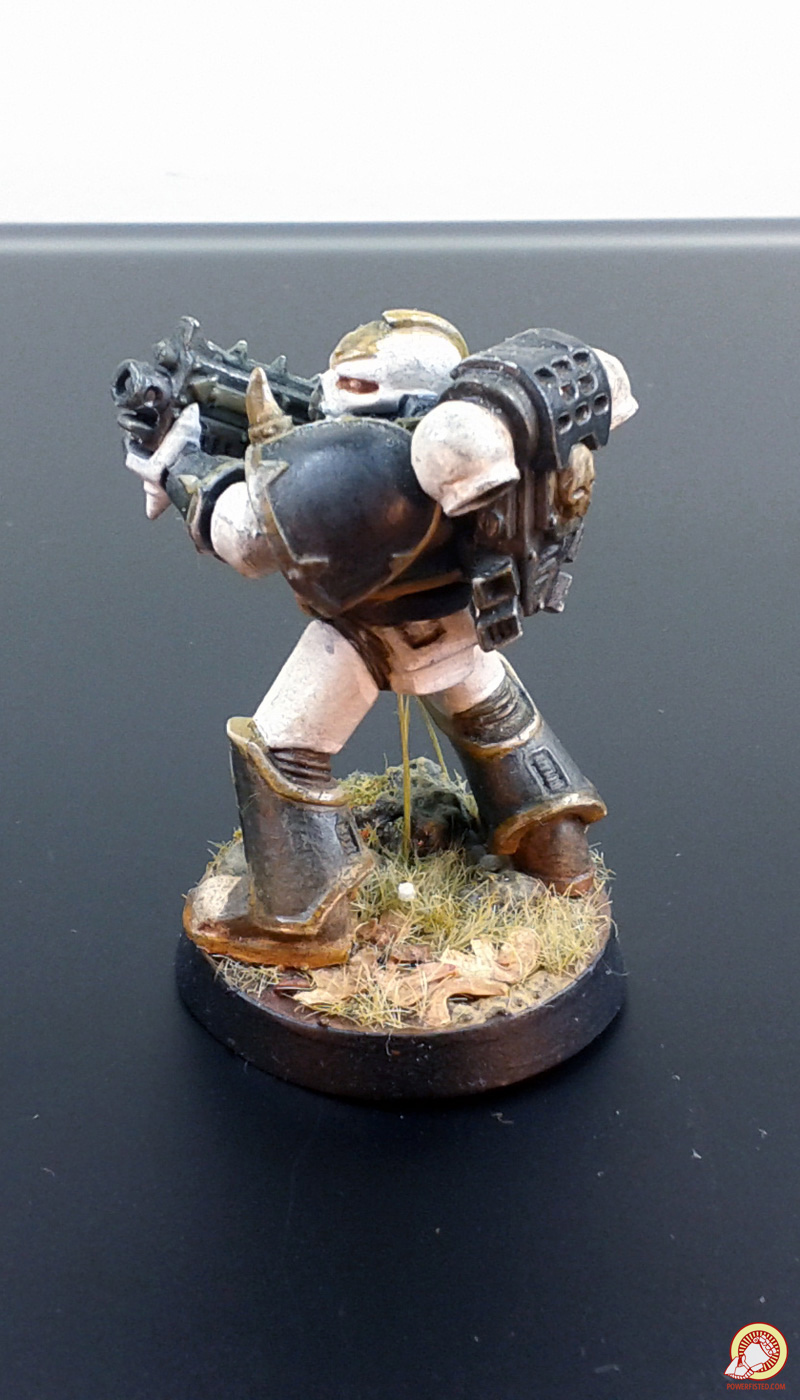
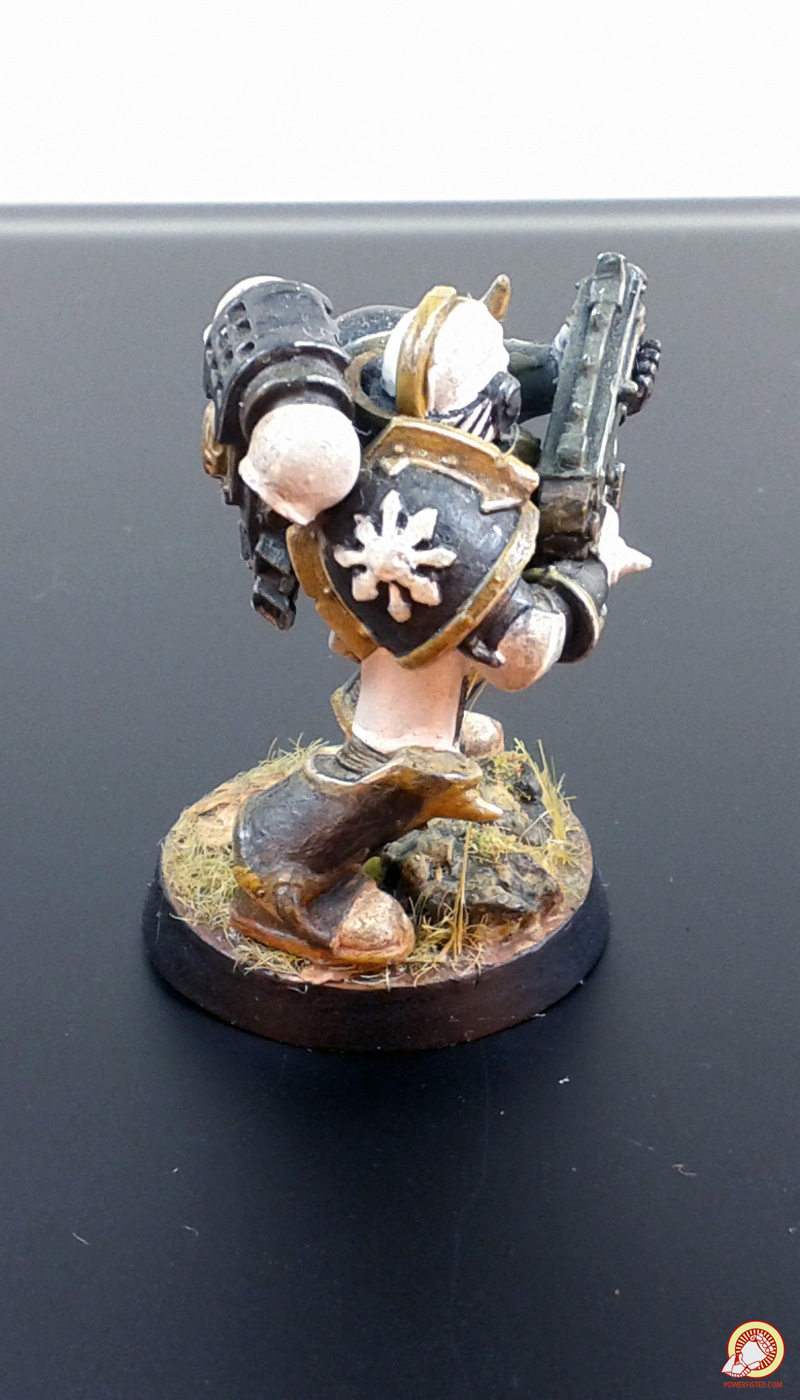
This was also the first model that I based. Basing was really fun to do, but I didn’t like the long strands of grass. It turned out pretty sloppy with grass everywhere. Again, I needed to be neater. The bolter was a green color that I somehow mixed together out of other colored paints. I liked it so much I’ve carried it over into the legionnaires that I paint today as a bit of a personal throwback 🙂
Lessons learned: Green is a good accent color (I ordered some green paint). Line highlights with a small brush are much much easier (I ordered one). Good brushes matter a lot (I got some). Too much grass makes the base look like a jungle. Thin coats are critical to success. White is a pain to paint. I need a wet palette if I’m going to two brush blend (so I built one).
—-
Test Model #3
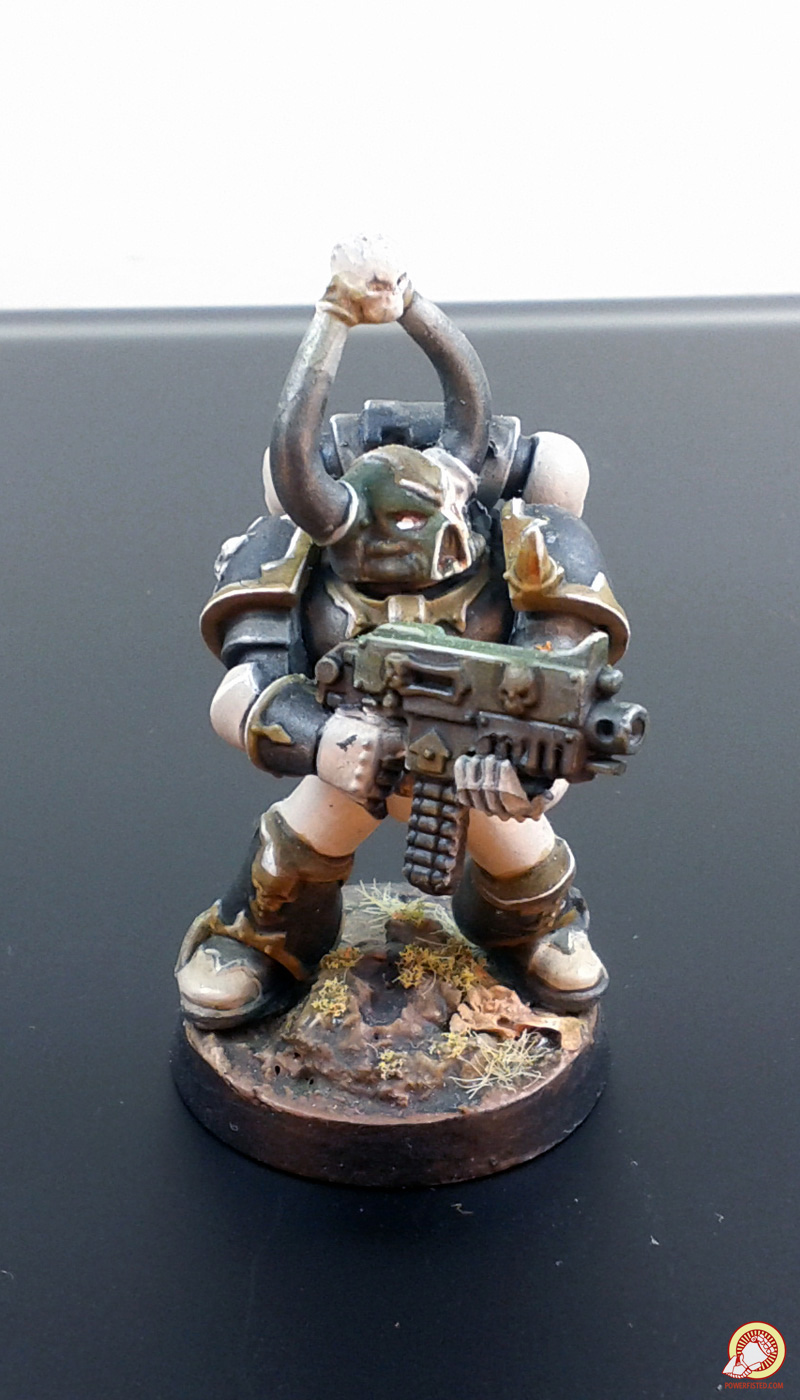
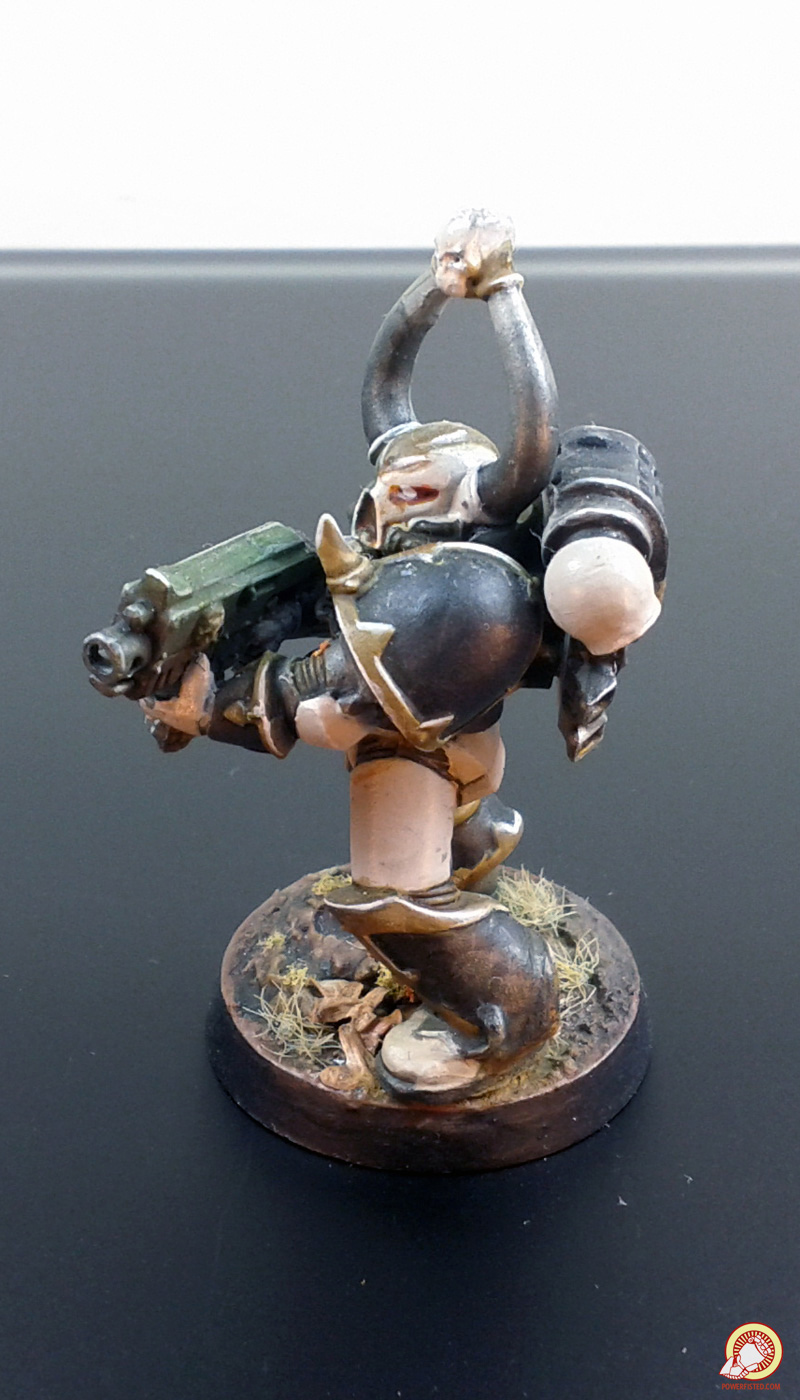
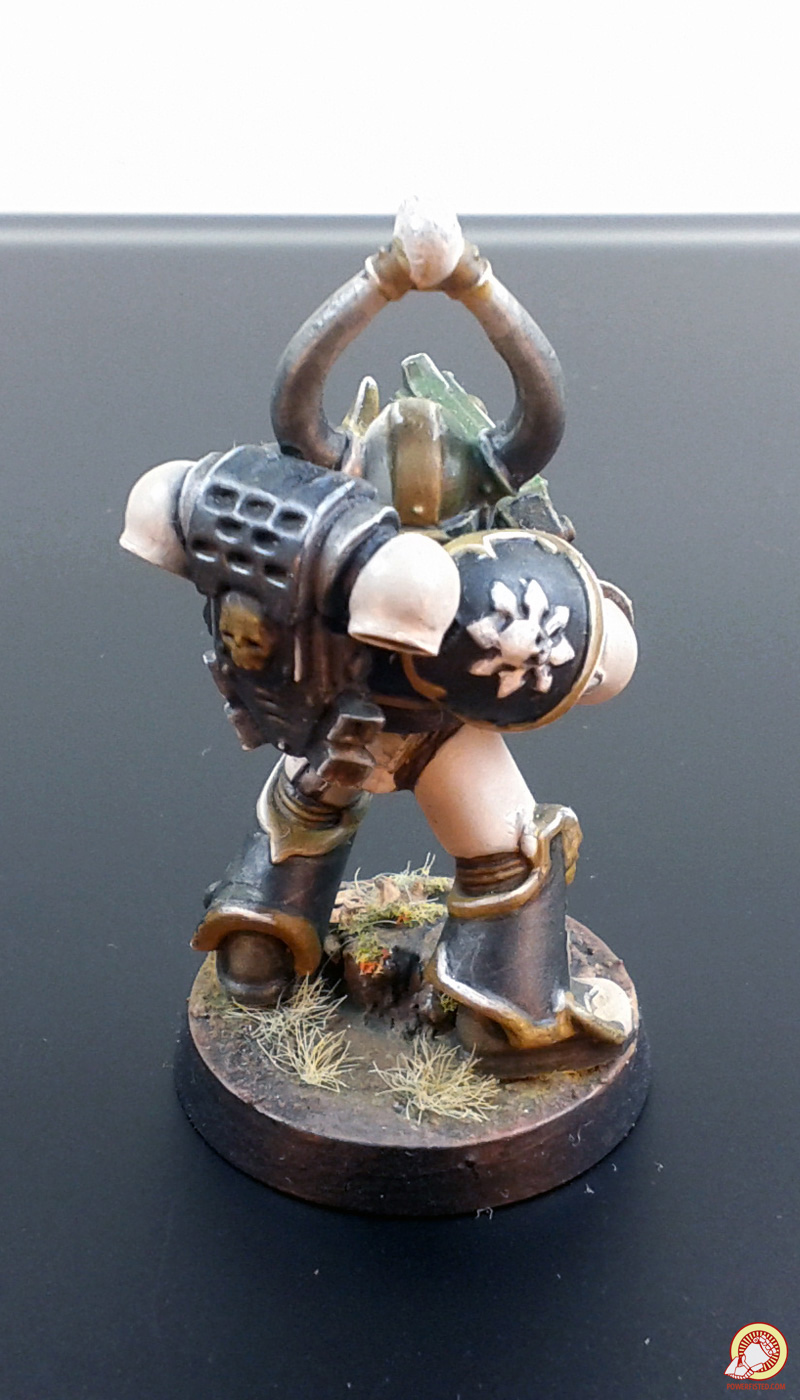
This model really came together well and pops. I spent a little longer on him than my 2nd, but not by much. Knowing what to expect and having brush control really mitigated the screwups that needed fixing. The two brush blending started to come through thanks to the wet palette I’d built. The base also looked much better than my first attempt, with better shading and clumps of grass + moss instead of a jungle look. The quartered theme was fun too, but I decided against it long term.
Around this time that I decided that white, being a bitch to paint, made my models look like they wore white pants, gloves, and shoes. I decided to try a grey color for those areas on my next test model
Lessons learned: I shouldn’t do a quartered theme. I am awful at painting eyes. My white is still too thick. Lots of white isn’t worth painting with a brush.
—-
Test Model #4
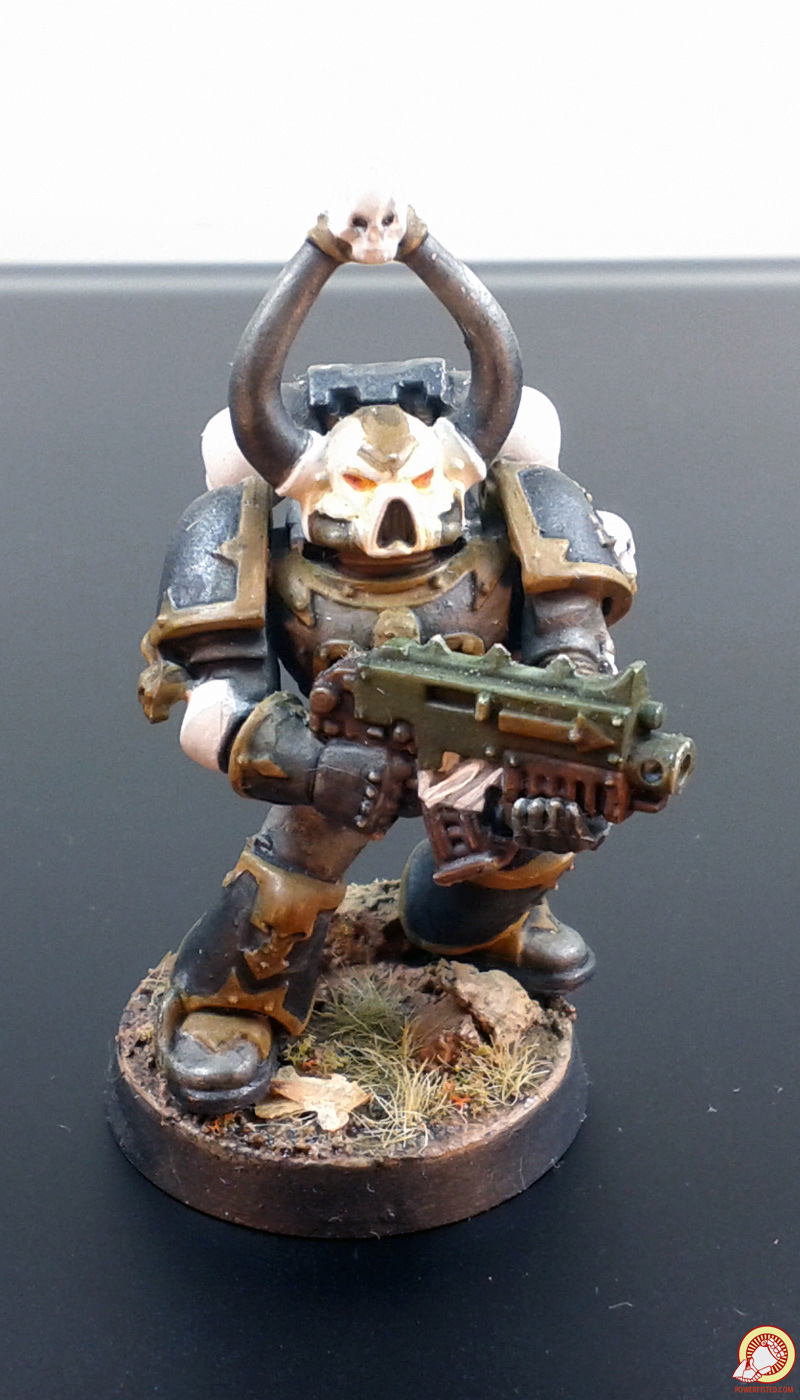
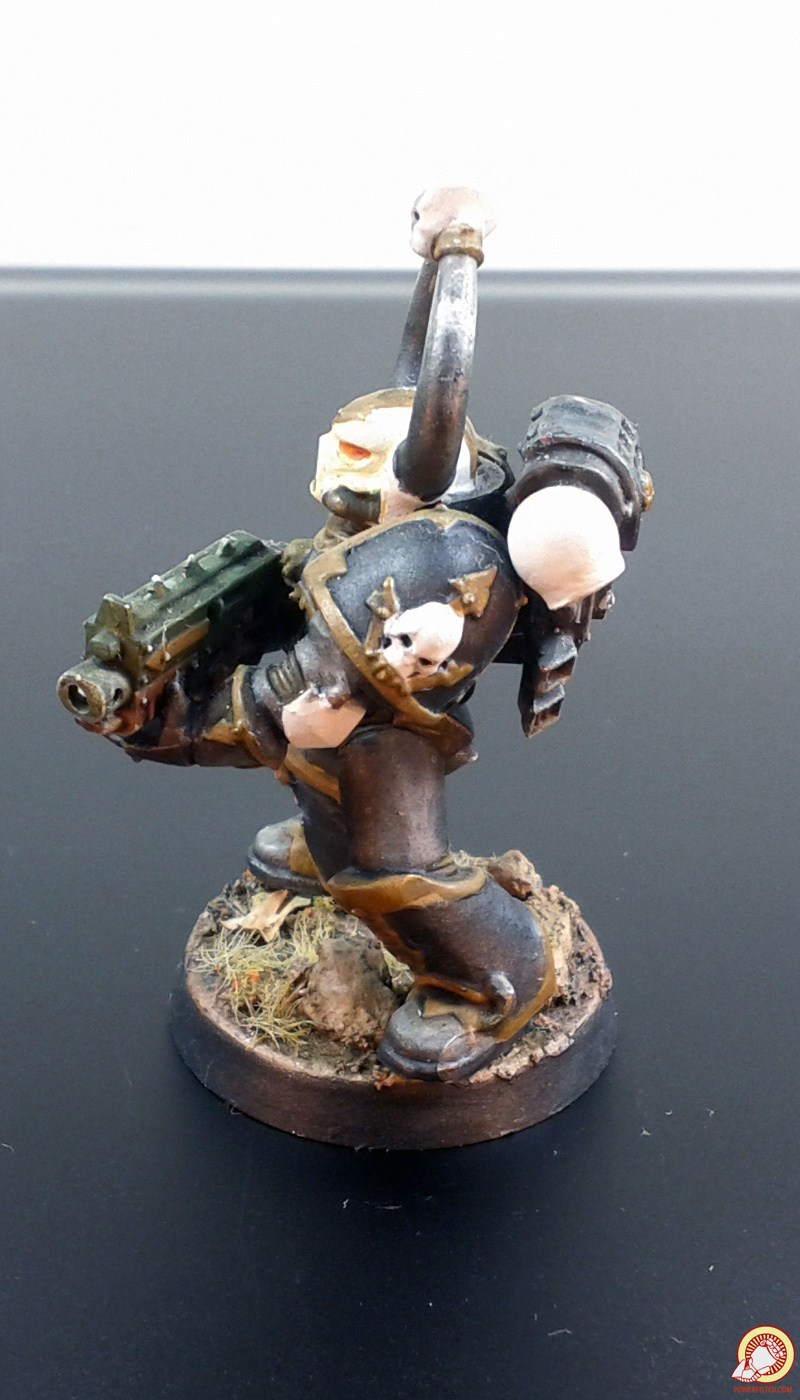
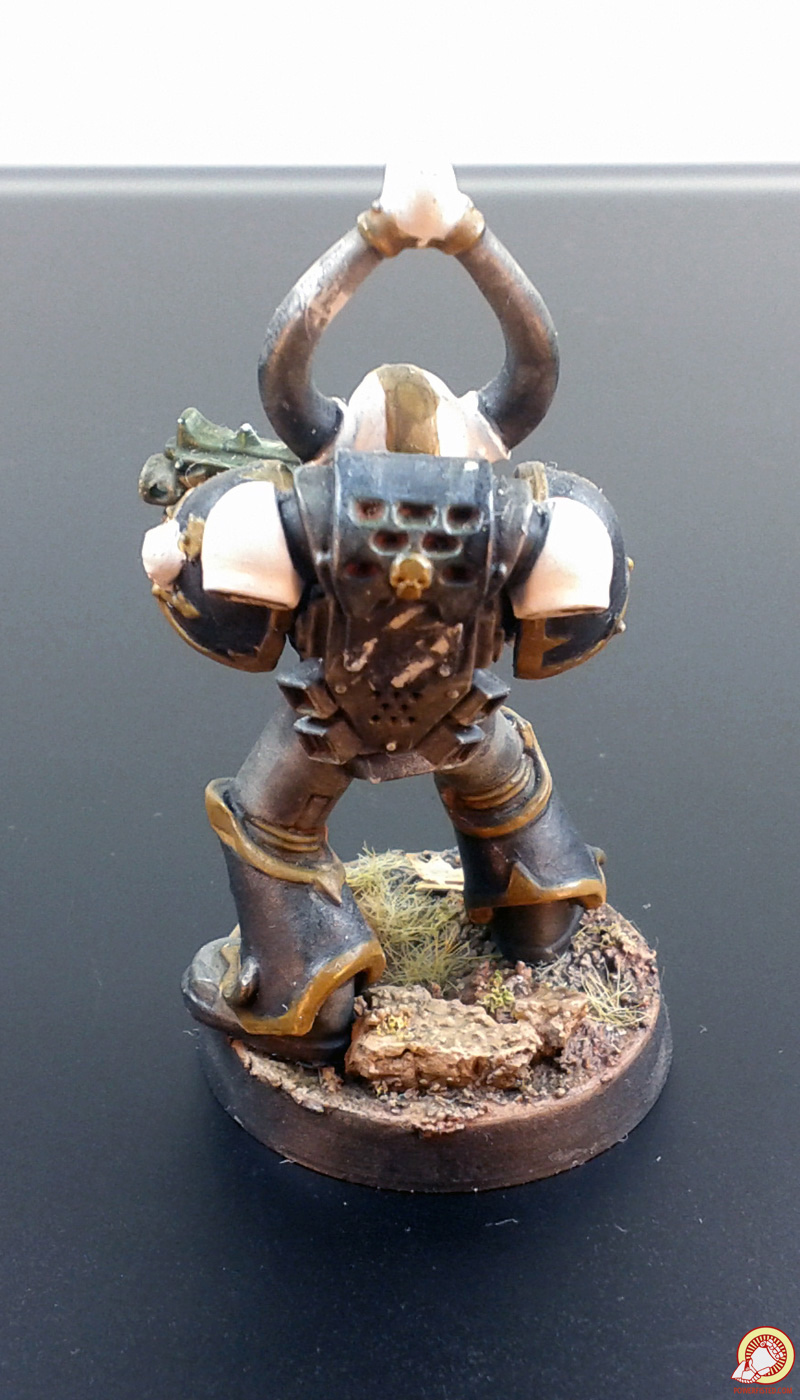
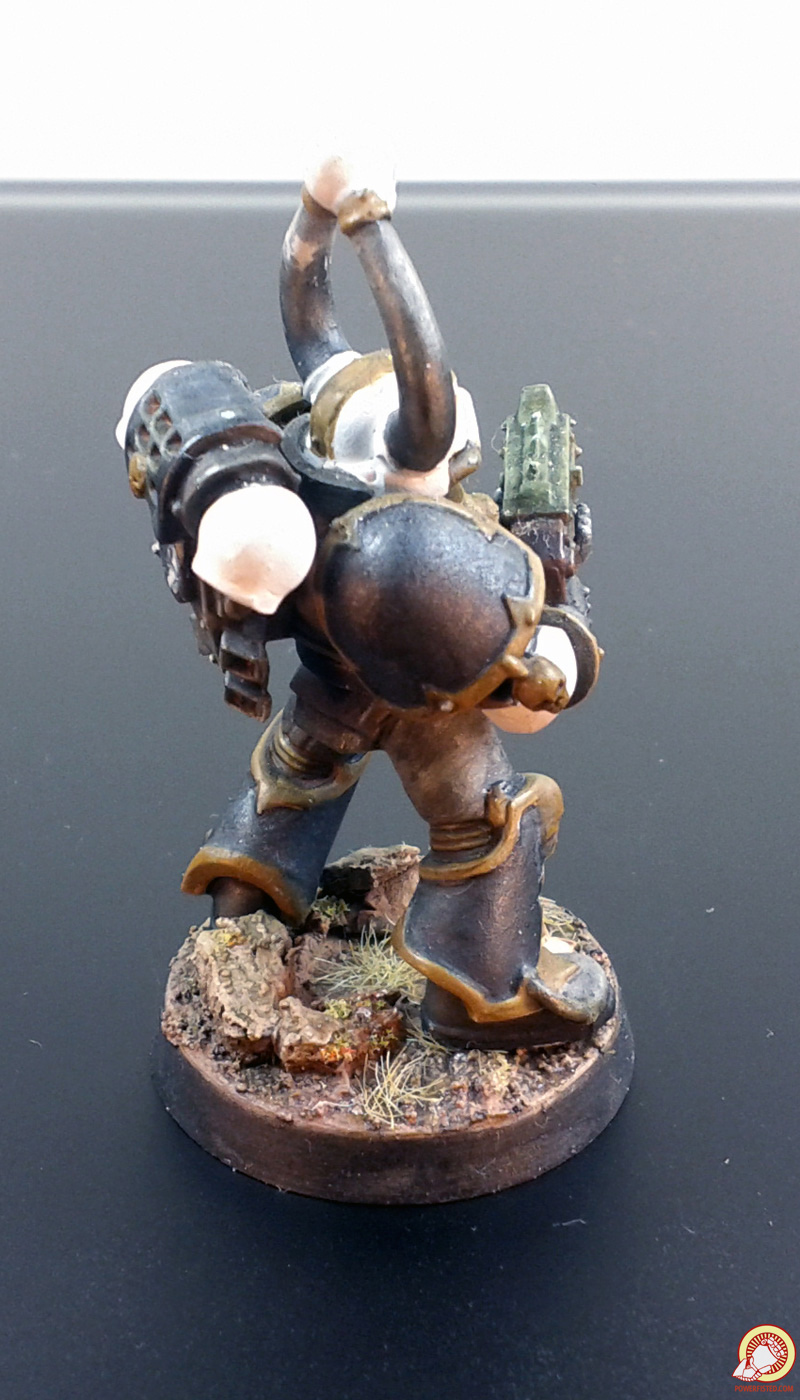
This model marks the end of my era of ‘basic’ painting- washes, wet blending, and regular paints. I really liked how it turned out- the wet blending works, my white is pretty smooth, the base is clean enough, and the eyes no longer suck. I really liked this model and, if I was a normal person, I would have stopped here and painted my army to match it.
Instead this is about the time I’d stumbled upon Ron Saikowski’s “from the warp” blog. His painting style was a real inspiration for me and the simple weathering tutorials convinced me to buy some secret weapon miniatures weathering powders for myself. By this point I knew that I had the basics just about down. The way forward was with new things.
Lessons learned: I need to try new things to keep getting better (so I bought a bunch of weathering supplies).
—-
Test Model #5
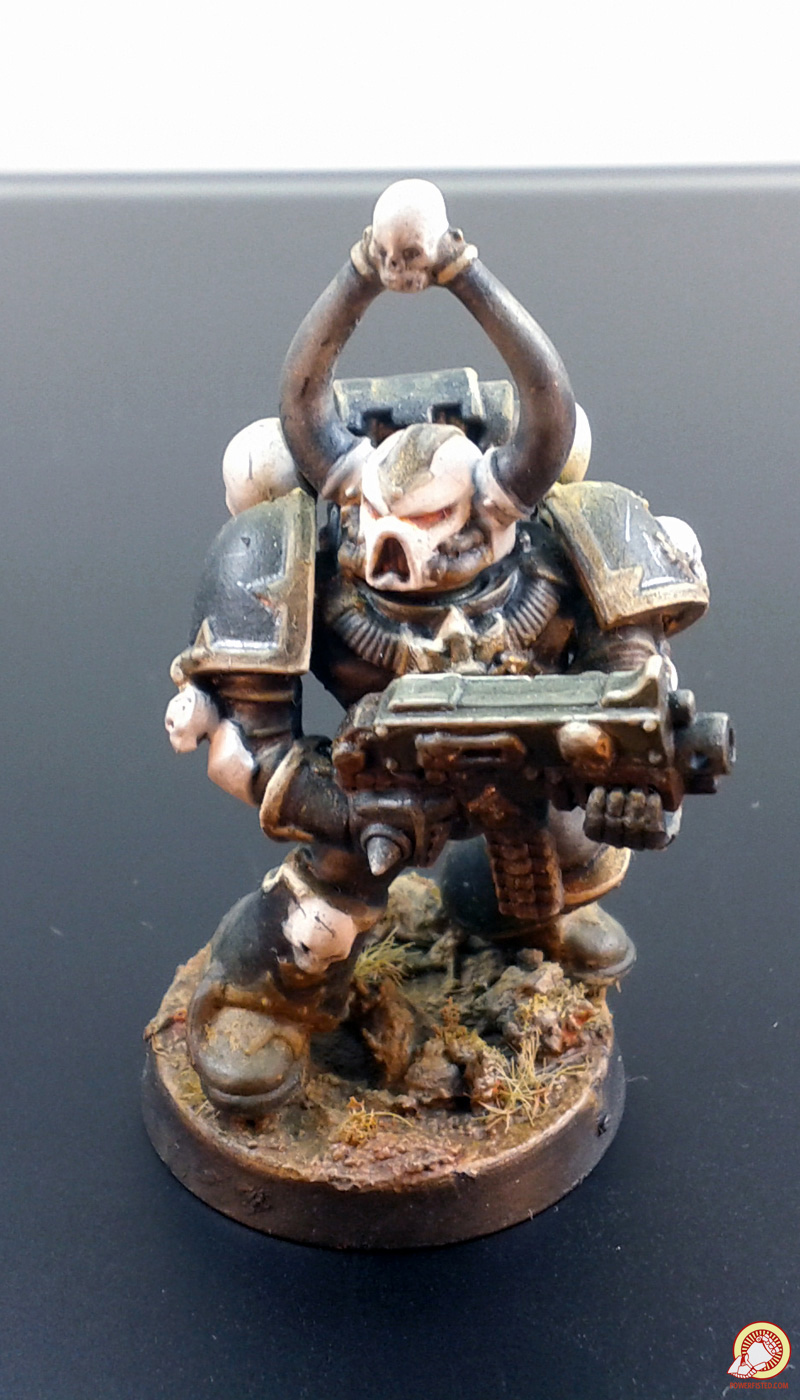
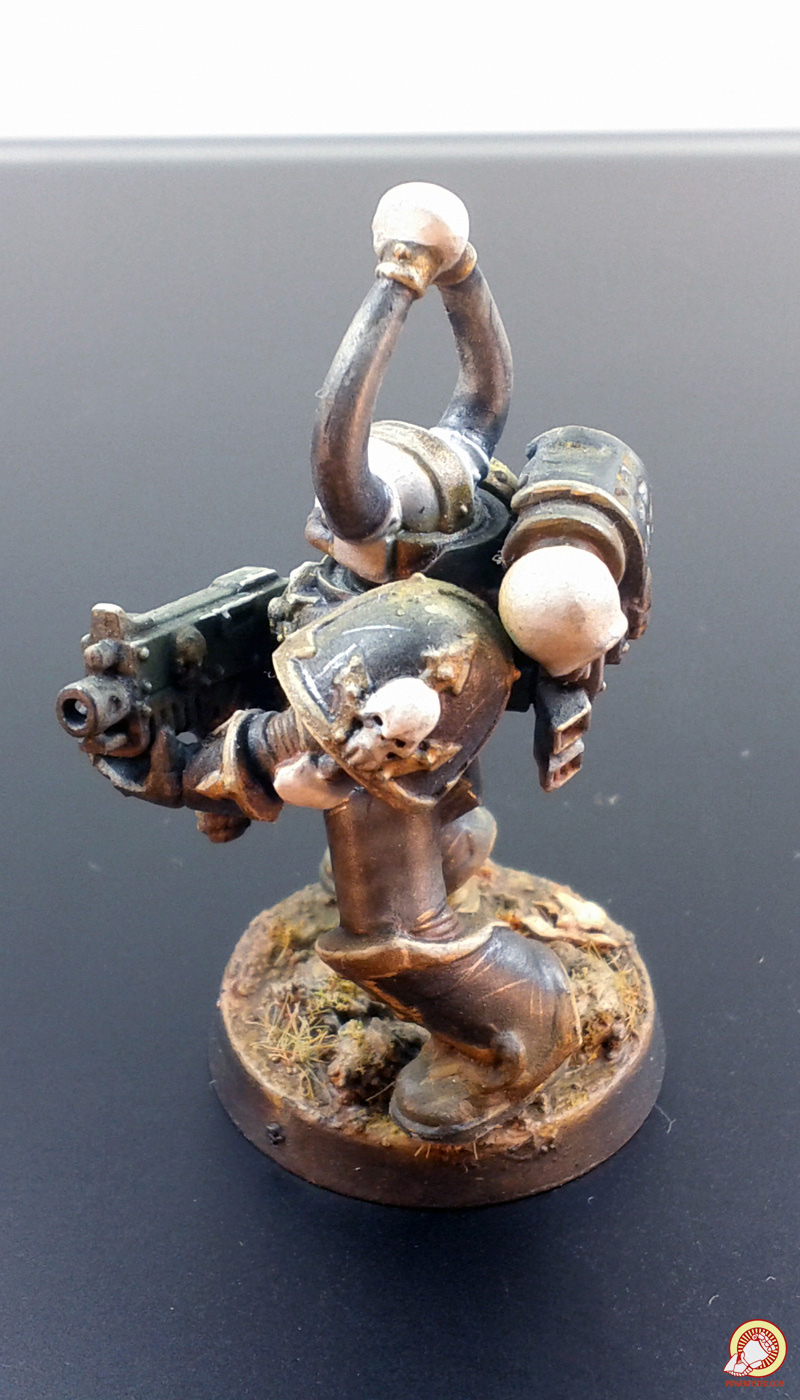
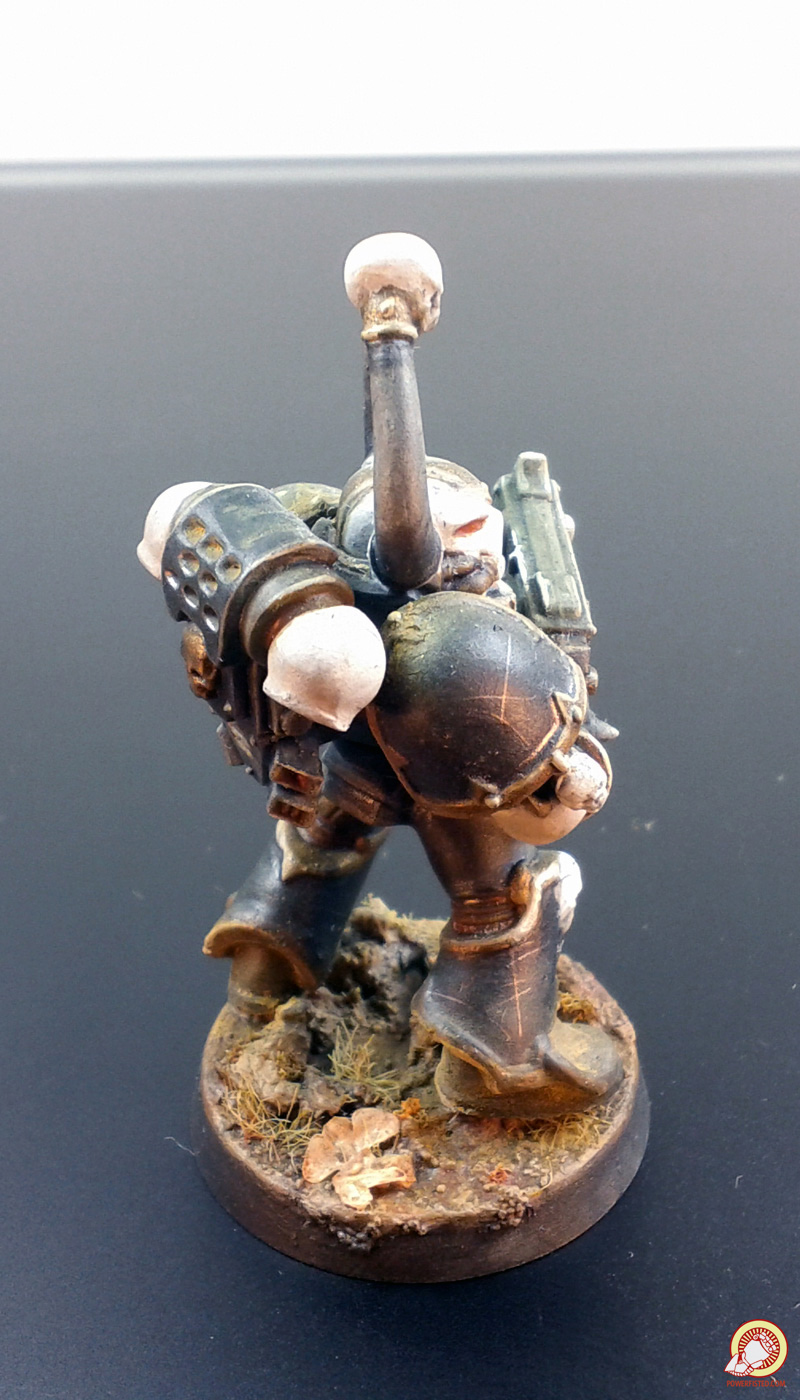
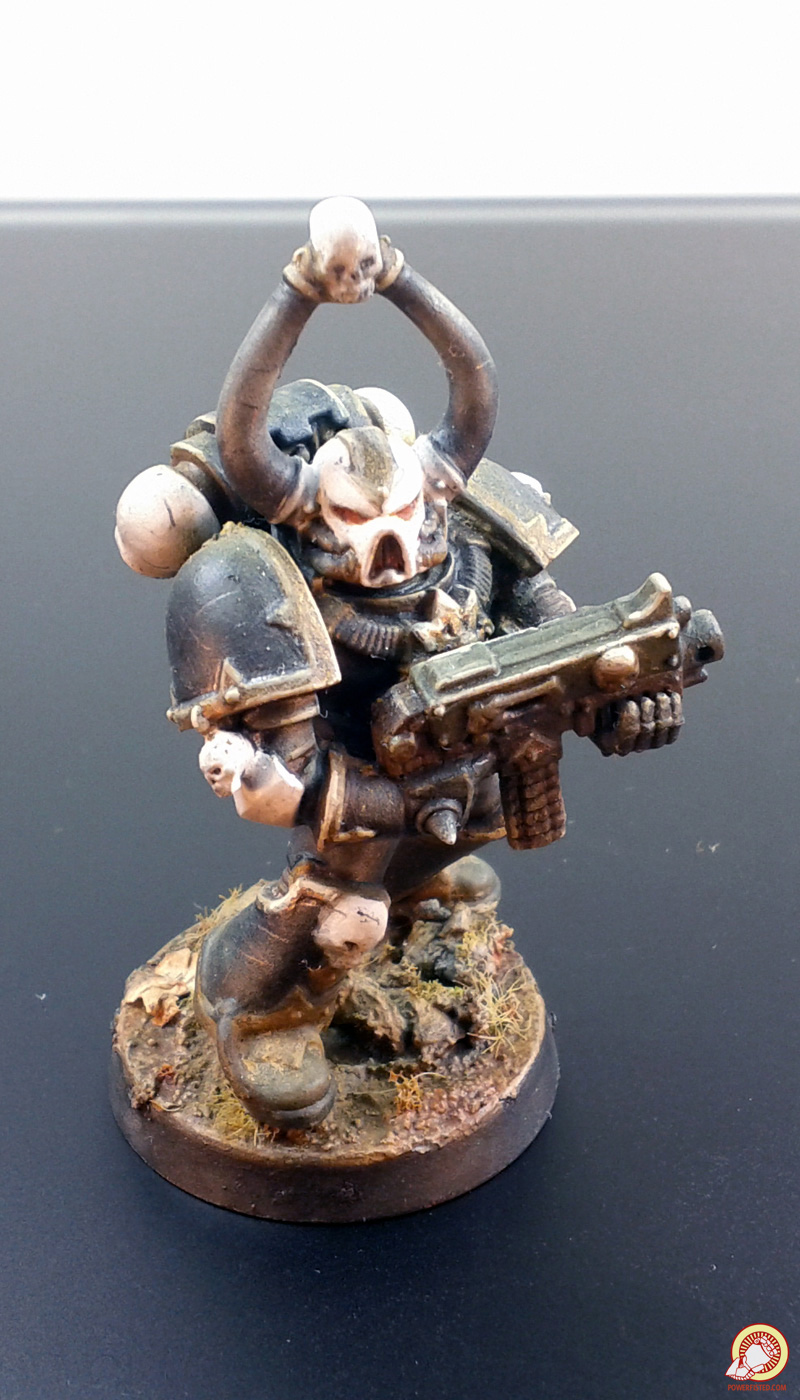
Model number 5 is a big stepping stone for me. I’m still wet blending using a palette, priming with gesso, using GW washes, and avoiding metallic paints. My basic technique is good for tabletop, but with pigments (weathering powders) and lead pencils it has more character. The led scratches really work great on the flat black surfaces of the armor and the yellow pigment blends the model into the world quite well.
Around this time I began to only target certain areas of a model with my washes- the level of contrast has improved as a result. The quest for extra color depth and contrast lead me to consider mixing some offcolor greys and blacks into my basecolors, which was another big shift in my painting.
Lessons learned: Washes should target only certain areas. Pigments ROCK. Lead pencils ROCK. White still SUCKS. I hate highlights. I should make my black color more interesting with offcolor paints (so I bought P3 coal black to experiment).
—-
Test Model #6 & #7
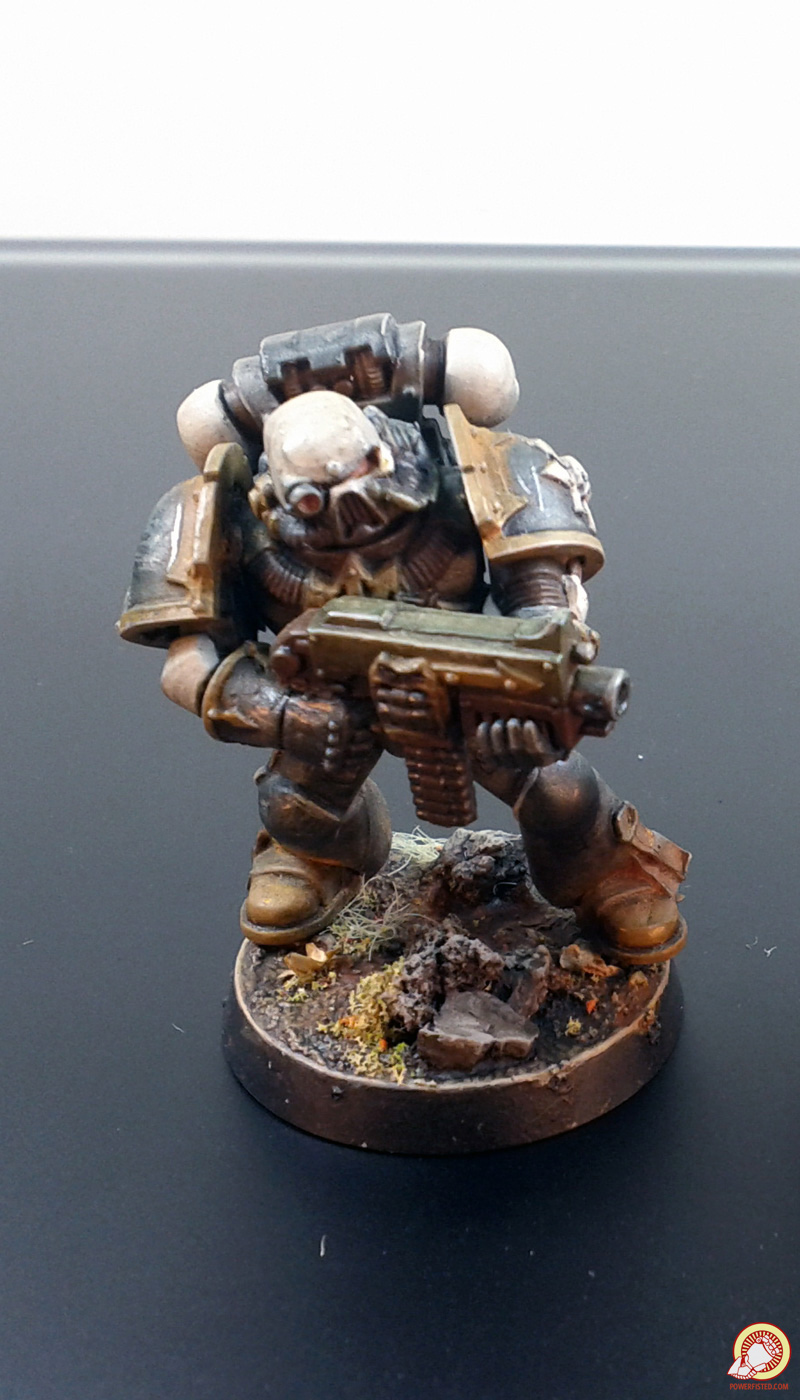
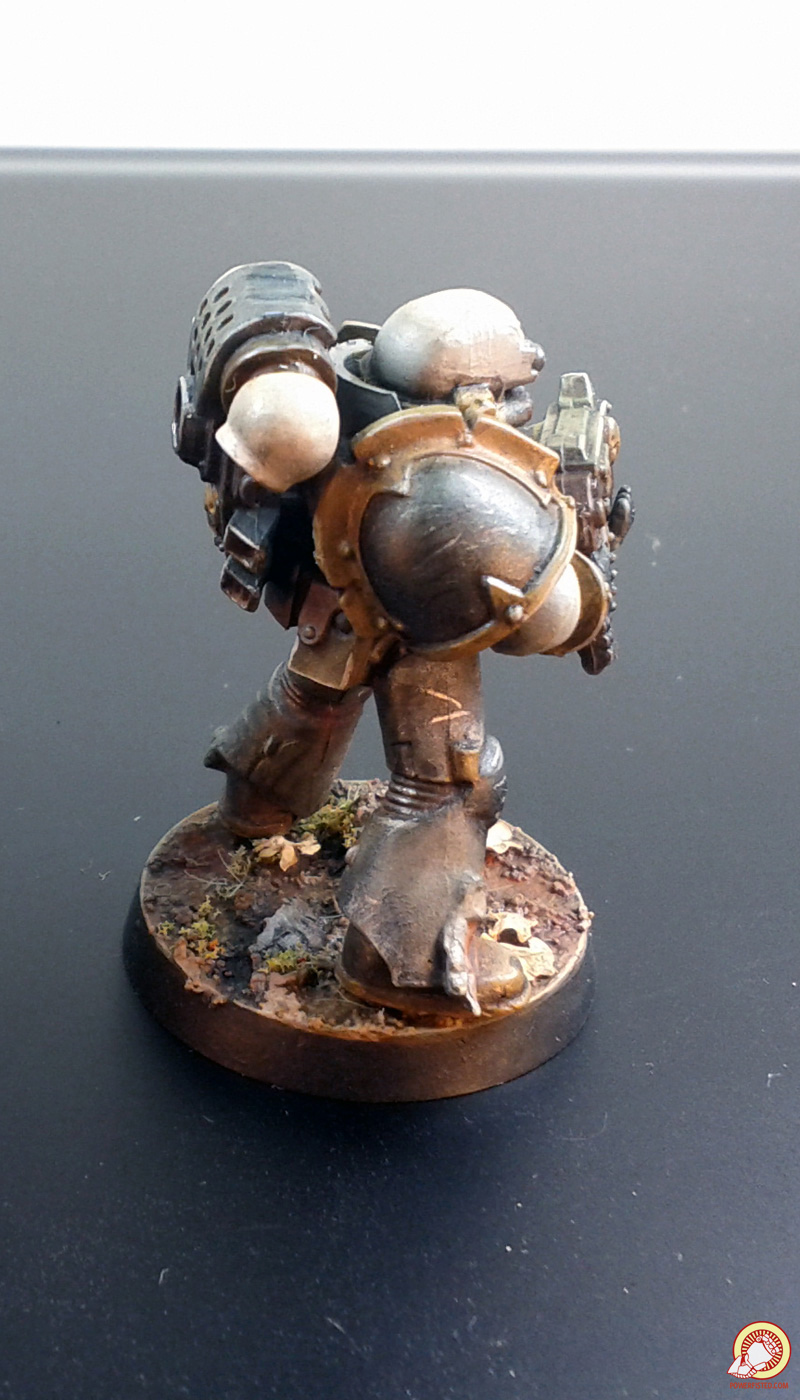
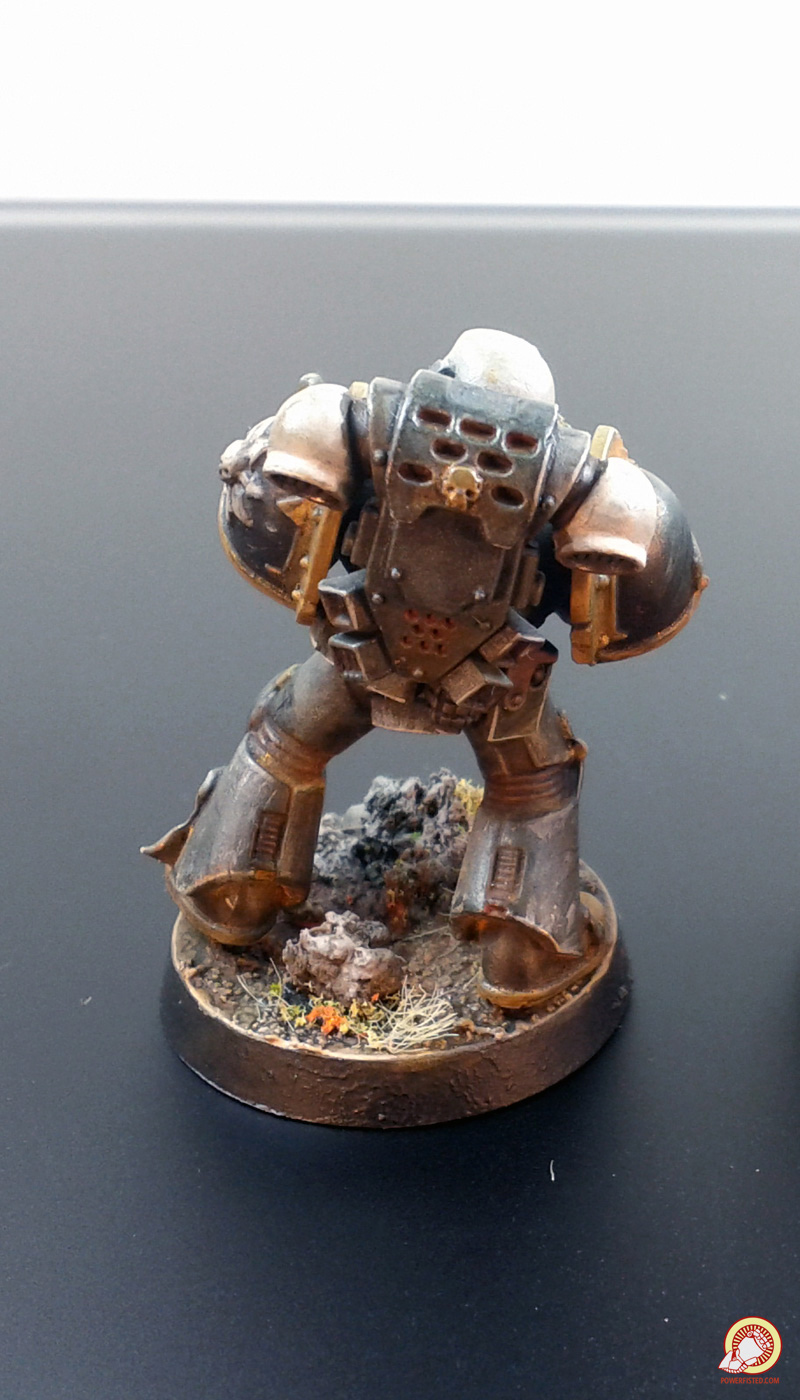
Motivated by the success of my pigments I painted two more test models. I did two at once so I could A/B test variations of “off color” blacks and greys in my basecoats. Yeah. I know. I am crazy. The result was fantastic though and adding a noticeable bump in color depth (even if you can hardly see it in my poor cellphone pictures). The paint is smooth, my scratches look great, the base is neat, and the blueish black really rocks. I was so satisfied I thought I was ready to stop and finally start my army…
… instead I borrowed the forgeworld masterclass books. Inside of those I found even more advanced techniques for painting. I was left feeling that my models weren’t good and that, for a super space man wearing futuristic metal space armour, my surfaces didn’t look metallic. I decided to hold off on my army and try using some metallic paints. To save money, I went out and bought some “Rub N’ Buff” metallic wax paint for my next model.
Lessons learned: I am still a bad painter. Armor looks a little flat. Try metallic paints.
—-
Test Model #8
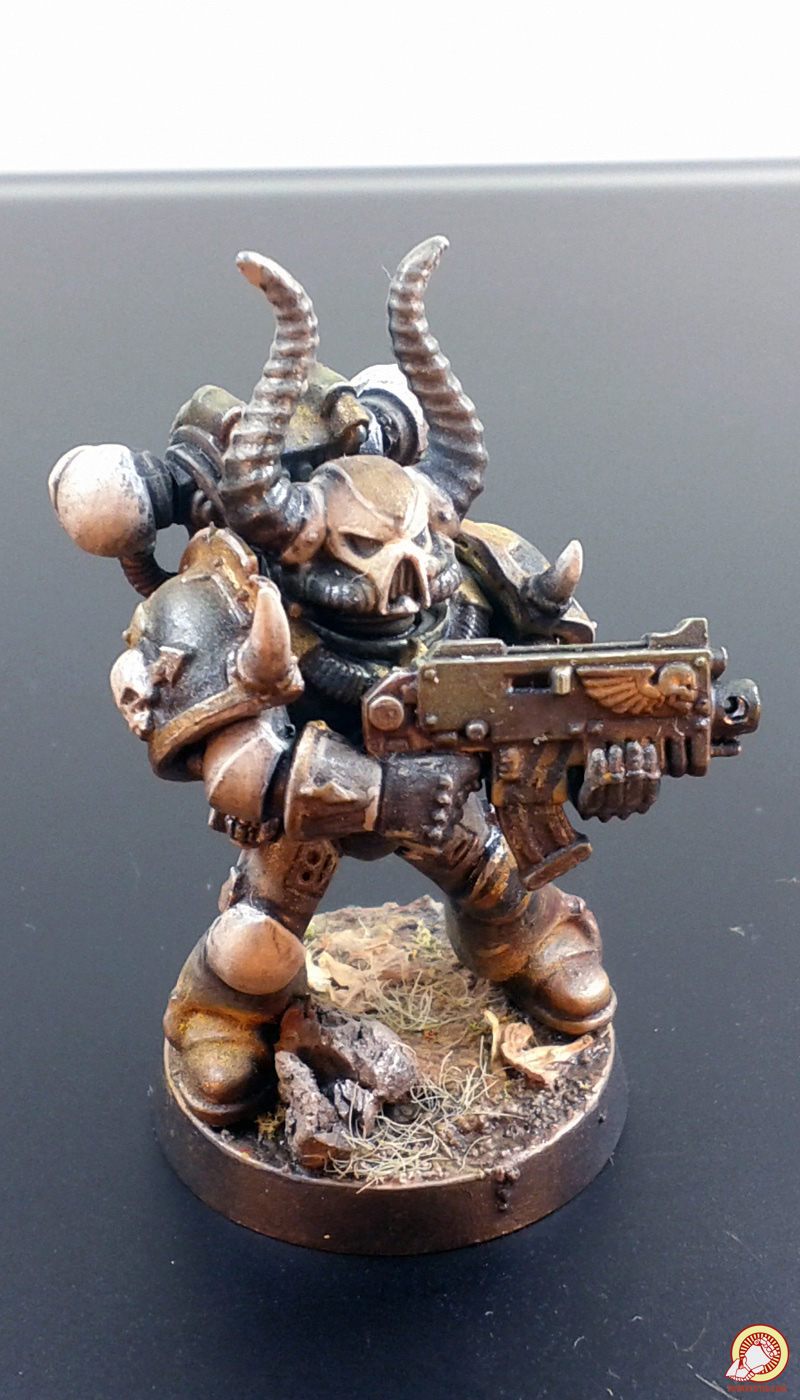
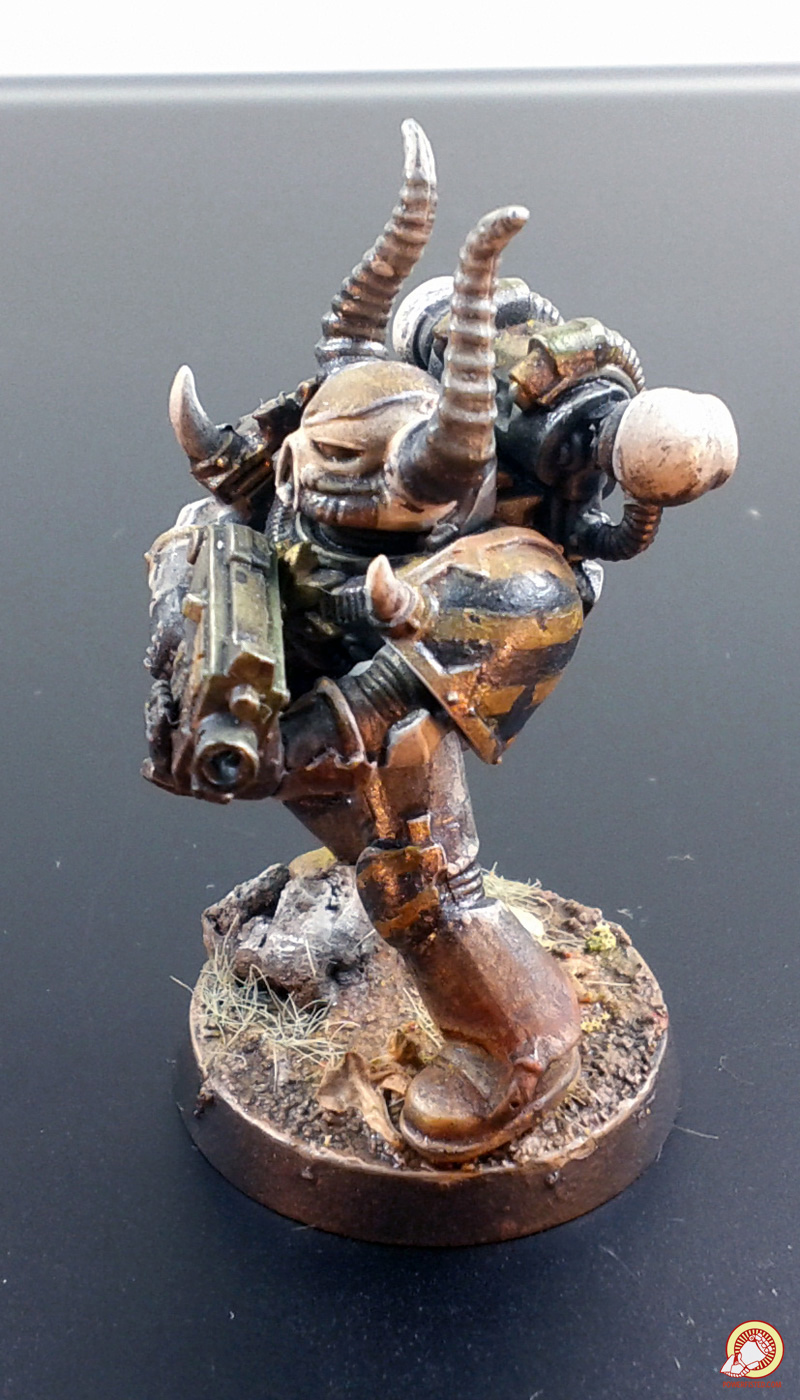
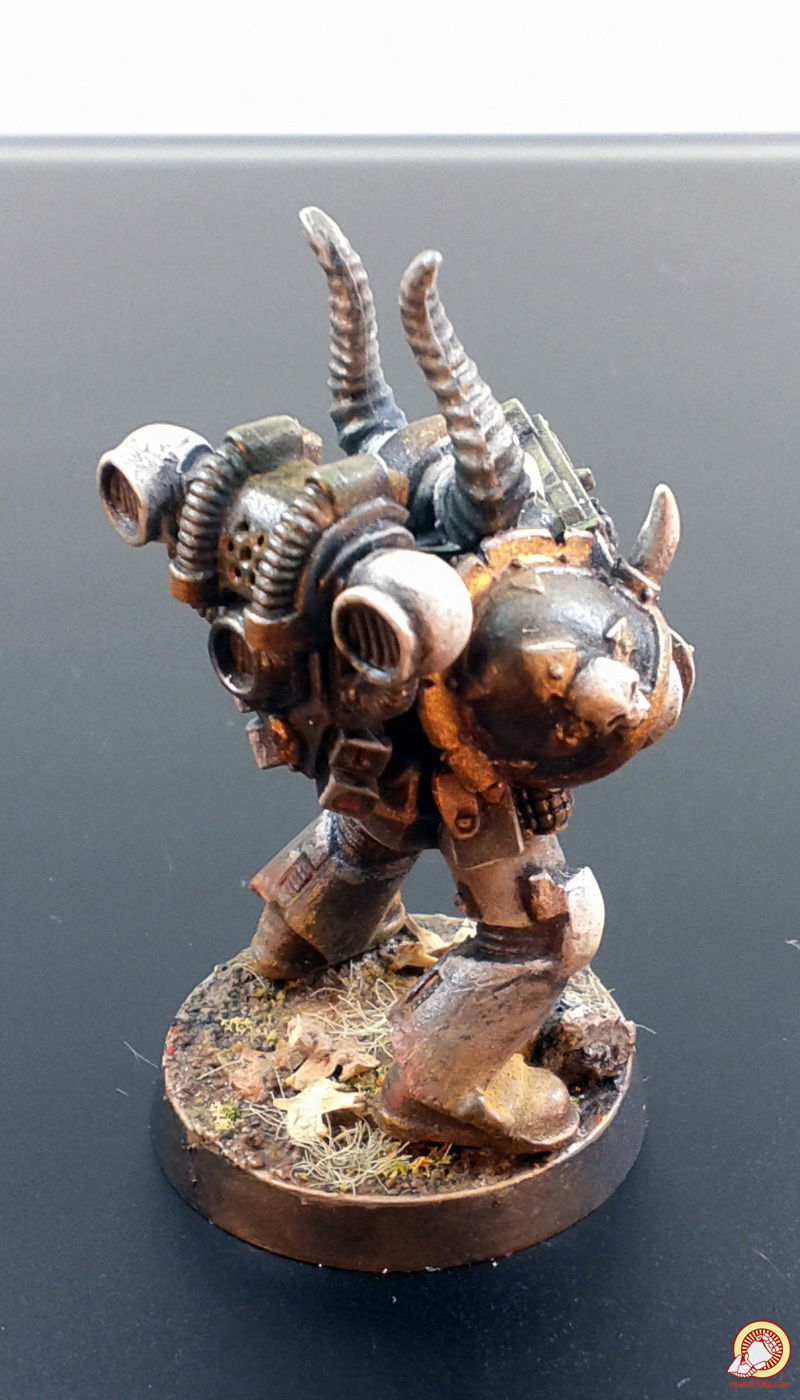
This is another major milestone in my painting- the end of what I would call my ‘intermediate’ period where I was still using mostly basic painting techniques with some advanced stuff thrown on top. Believe it or not, but after painting this model I felt I had taken a step back from where I was going. I was not happy with how it looked compared to where I wanted to be and knew that I had a long way to go before I was happy. I also realized that if I was going to really improve my skills I needed to bite the bullet and invest in some proper paints and tools. I had a decent foundation of skills to paint with, but by constantly looking for shortcuts I was left with results like these (I guess I had Rub N Buff PTSD).
In the end, Wax Metallic paints ended up being too difficult to work with and I haven’t used them since. If anything, I was motivated to keep looking at new ways to use metallic paints along with figuring out WHY my models were not coming together the way I wanted. I was so bad at freehanding things like hazard stripes… SUCH a big problem for a guy who wanted to do an Iron Warrior army. I almost changed legions.
This post ends on a bad note, since I stopped painting for a while here as I saved money and considered my options (I was still working in video games, which was long hours and poor pay even as an assistant producer). It would take 4 more models past this one, and some radical changes to my painting, to get me to the level that I wanted to be at. Perhaps unsurprisingly, of all the steps I’ve covered, its the upcoming 4 that show off my improvements the most.
Lessons learned: Never give up.
